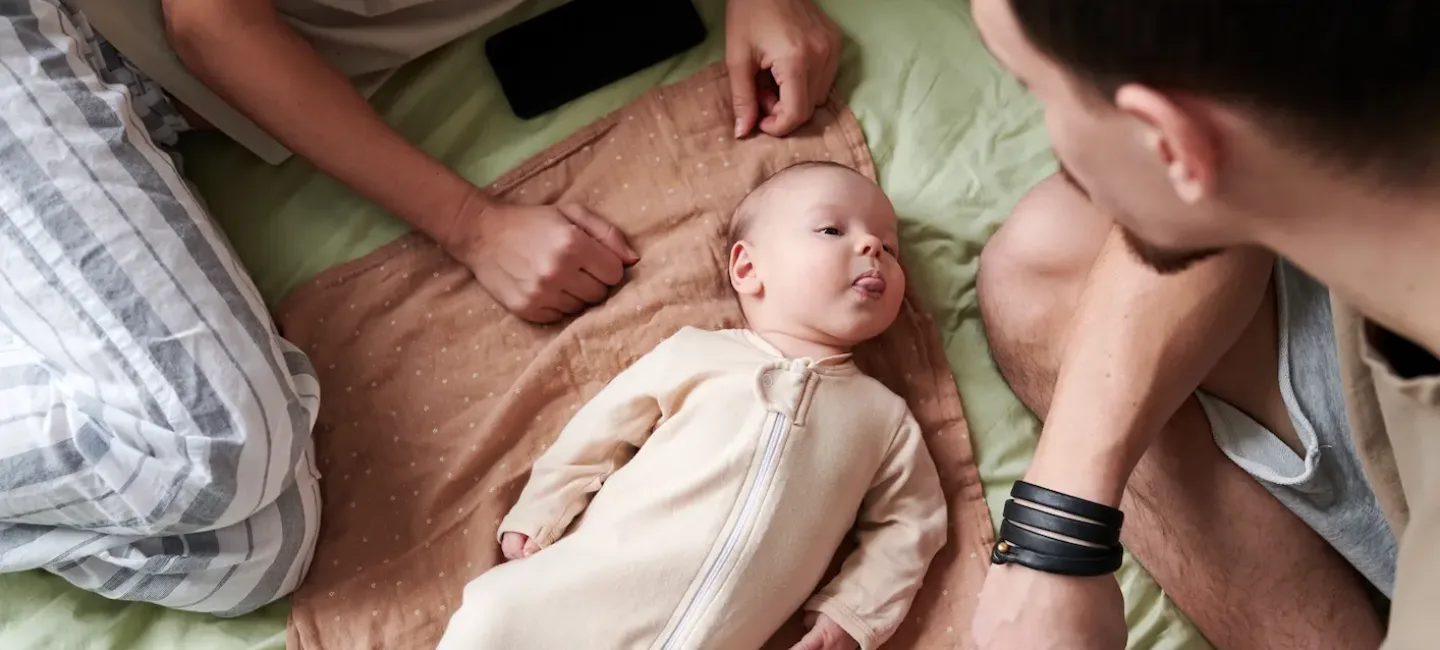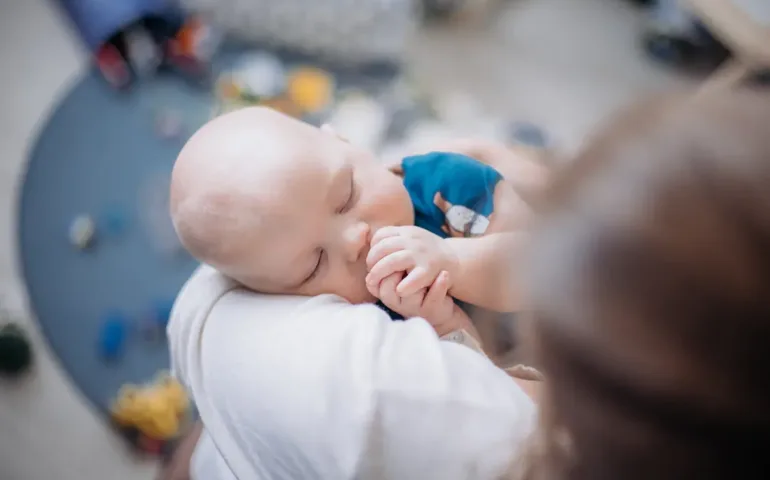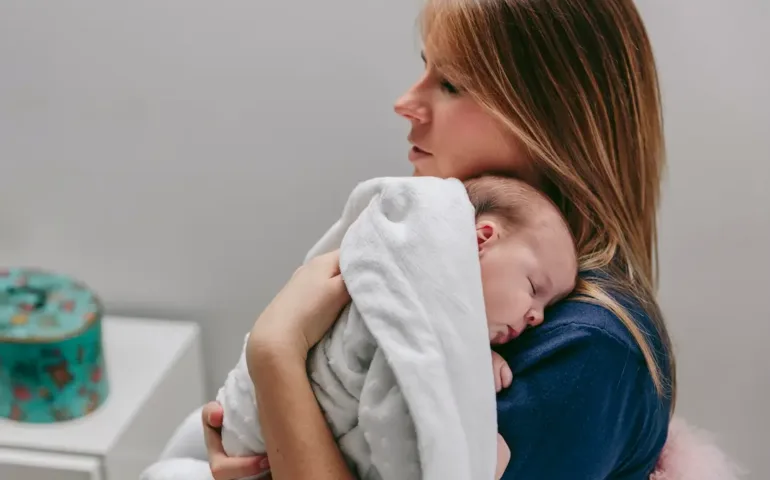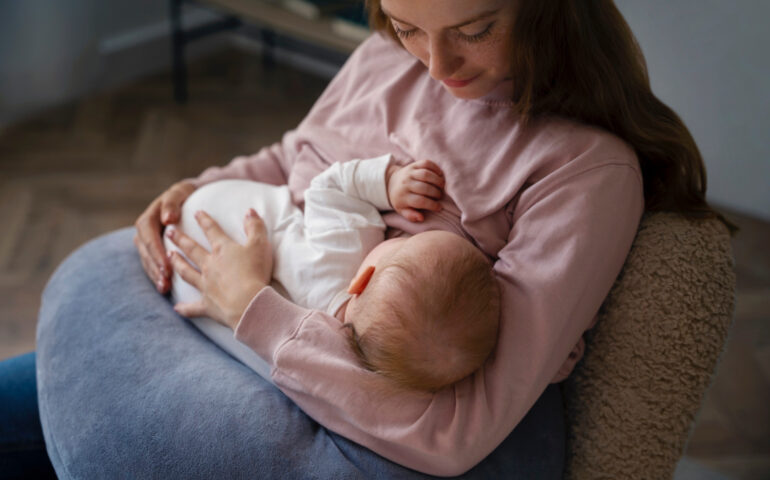
Sleep is an essential element for your baby’s healthy development. It is therefore natural to have questions about best practices to follow. Can you have a newborn sleep in your bed? What are the risks? Are there alternatives? Having a newborn sleep in your bed: let’s take a closer look.
Having a newborn sleep in your bed: what are we talking about?
Questions about newborn sleep are so numerous that it’s sometimes easy to confuse certain terms or different practices. Let’s review together the differences between co-sleeping and bed-sharing.
Co-sleeping and bed-sharing: definition
When it comes to sharing the same space with your baby for sleep, there are mainly two notions: co-sleeping and bed-sharing. Co-sleeping is the practice of having your baby sleep in your bedroom but in their own crib (not in the parental bed). This allows you to keep your baby close while giving them their own safe space to fall asleep and sleep through the night. It is a practice recommended by the WHO until your baby is 6 months old, as it reduces the risk of sudden unexpected infant death (SUID). Bed-sharing, on the other hand, involves sharing the same bed with your baby and is not recommended.
Why is bed-sharing not recommended?
Bed-sharing, or sleeping in the same bed as your baby, is not recommended due to the serious risks it poses: falls and the major danger of sudden unexpected infant death (SUID), most often from suffocation. It is therefore a discouraged practice. Indeed, it is recommended to have your baby sleep in a safe sleeping environment, with a firm mattress, without pillows, duvets, or stuffed animals. The parental bed is far from offering these conditions and also carries the risk of uncontrolled movements while you sleep. 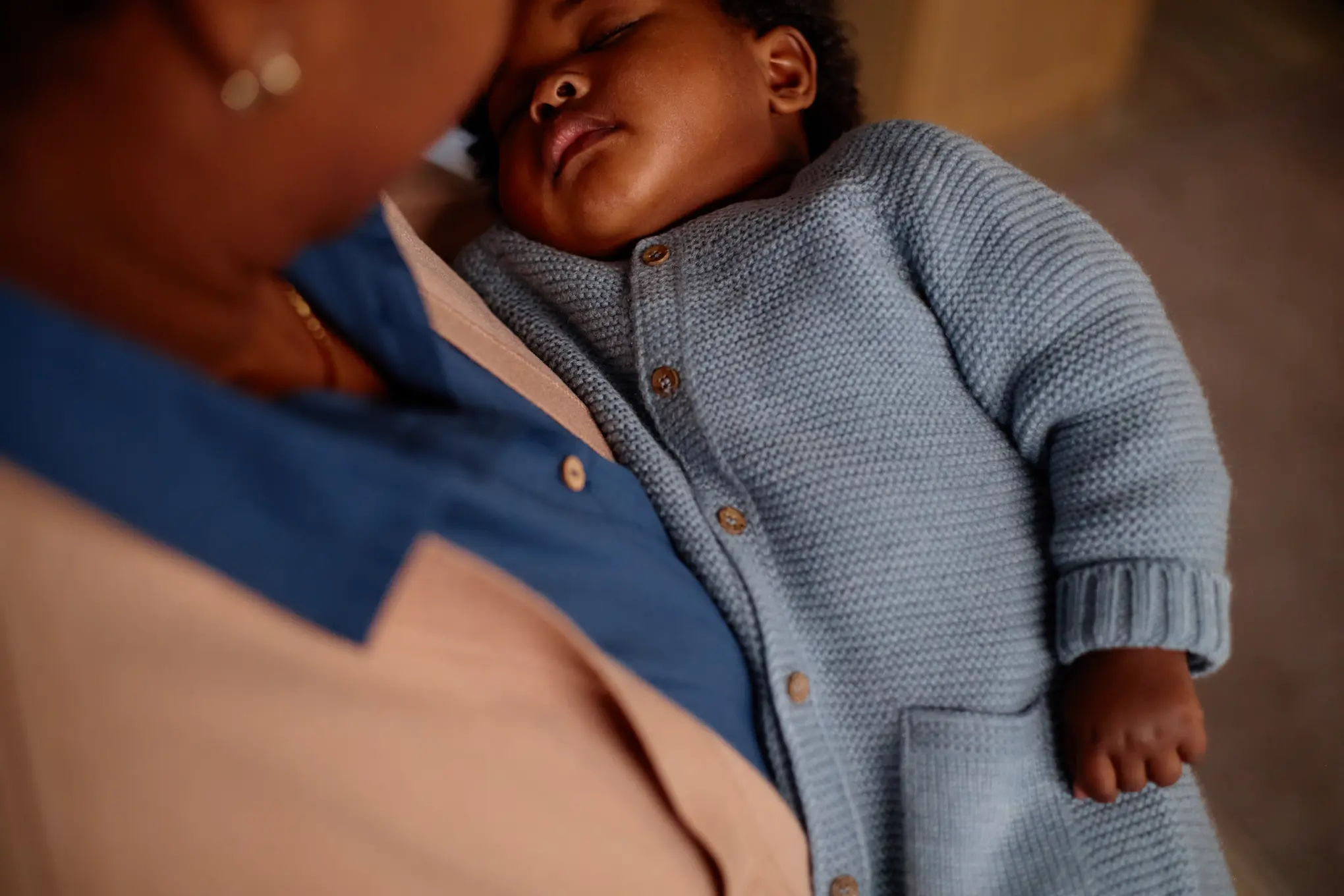
The risks of bed-sharing
Having a newborn sleep in the parental bed, even for a nap or during the first months, is never without risk. As mentioned, the main dangers identified by health professionals are as follows:
- Suffocation: your newborn may slip under a duvet, roll against a parent, or become trapped between the mattress and the wall.
- Falls: a newborn can easily roll and fall off the bed, even if they cannot yet move independently.
- Sudden Unexpected Infant Death (SUID): bed-sharing increases the risk of sudden infant death, especially if safety rules are not strictly followed.
As a reminder: the WHO recommends favoring safe proximity, meaning having your newborn sleep in your room but in their own bed (co-sleeping) until the baby is 6 months old.
Want to learn more? Feel free to download the May app, where you’ll find plenty of resources to support and guide you throughout your journey as a new parent. 
Baby sleep safety: precautions for having a newborn sleep in your bed
As we’ve seen, bed-sharing (having a newborn sleep in your bed) is strongly discouraged by health authorities. However, if you have no choice and only occasionally, you may have your baby sleep in your bed by following some safety guidelines. Here are the main recommendations to try to ensure your baby’s safety in the parental bed:
- Baby’s position: always place your baby to sleep on their back.
- Choice of mattress: the mattress should be firm, flat, and perfectly fitted to the bed frame to avoid any gaps where your baby could sink or get stuck.
- Duvets, pillows, and soft objects: remove all duvets, pillows, or cushions. A clutter-free environment greatly reduces suffocation risks.
- Healthy sleep environment: ideally, keep the bedroom temperature between 18°C and 20°C (64°F–68°F), avoid smoking, alcohol, and any medication that impairs alertness. Never sleep with your baby in the bed if you are very tired, especially after a festive evening or after taking substances that reduce your attention.
- Baby’s placement in the bed: always place your baby next to the wall or a safety barrier, never between both parents, to limit the risk of falls or compression.
- Use of a sleep sack: opt for a sleep sack instead of blankets to keep your child warm.
- Ensure the bed is inaccessible to pets or young children.
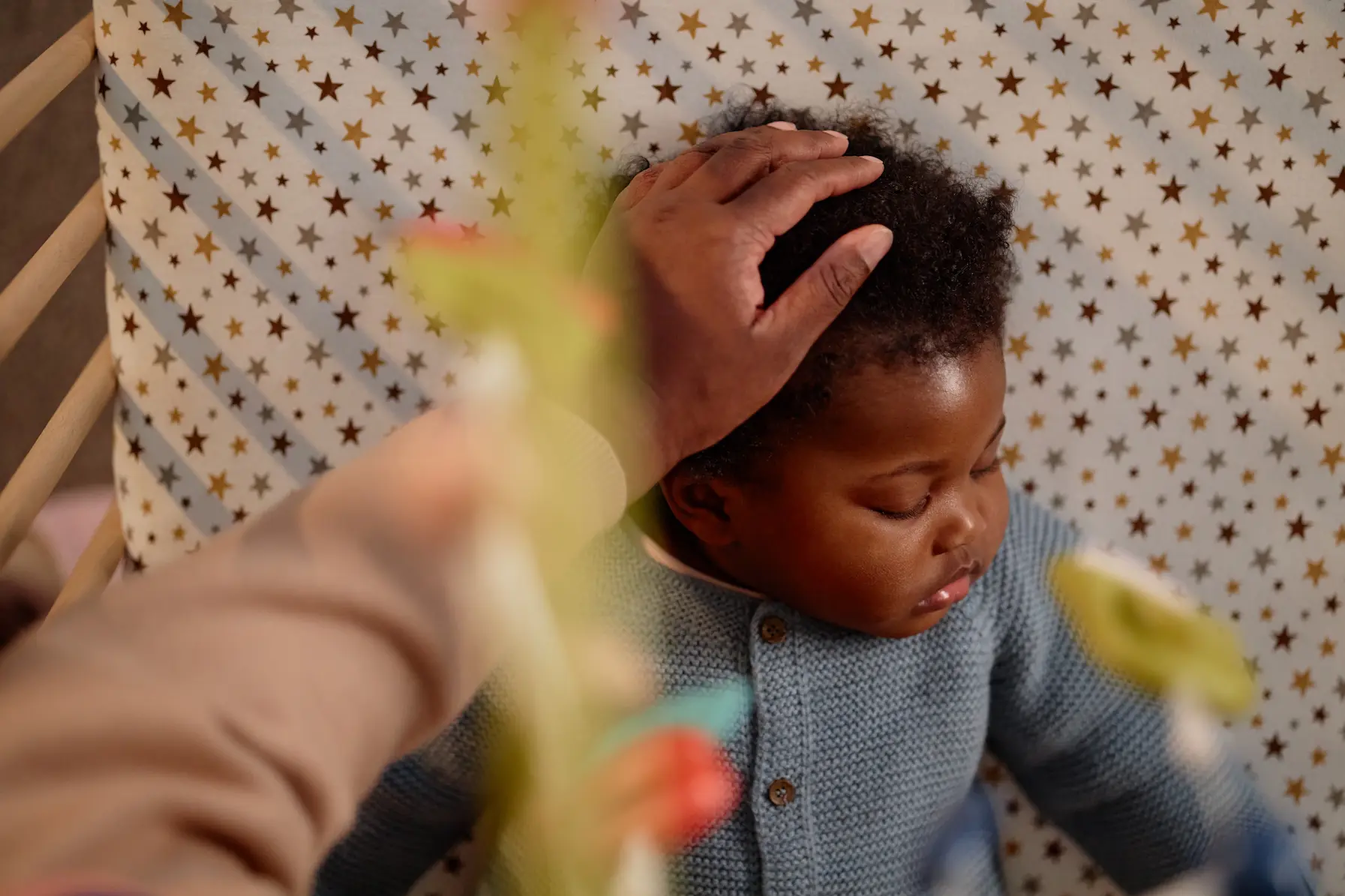
Co-sleeping: an alternative to the parental bed
Co-sleeping has become an ideal solution if you want to enjoy nighttime closeness with your baby without exposing them to the risks of bed-sharing. As a reminder, co-sleeping means placing your baby in a special crib attached to your bed but separated from the parental mattress by a barrier or secure opening system. This co-sleeping crib works like an extension of your bed: it allows you to have your baby within reach while offering them a separate sleeping space suited to their needs. 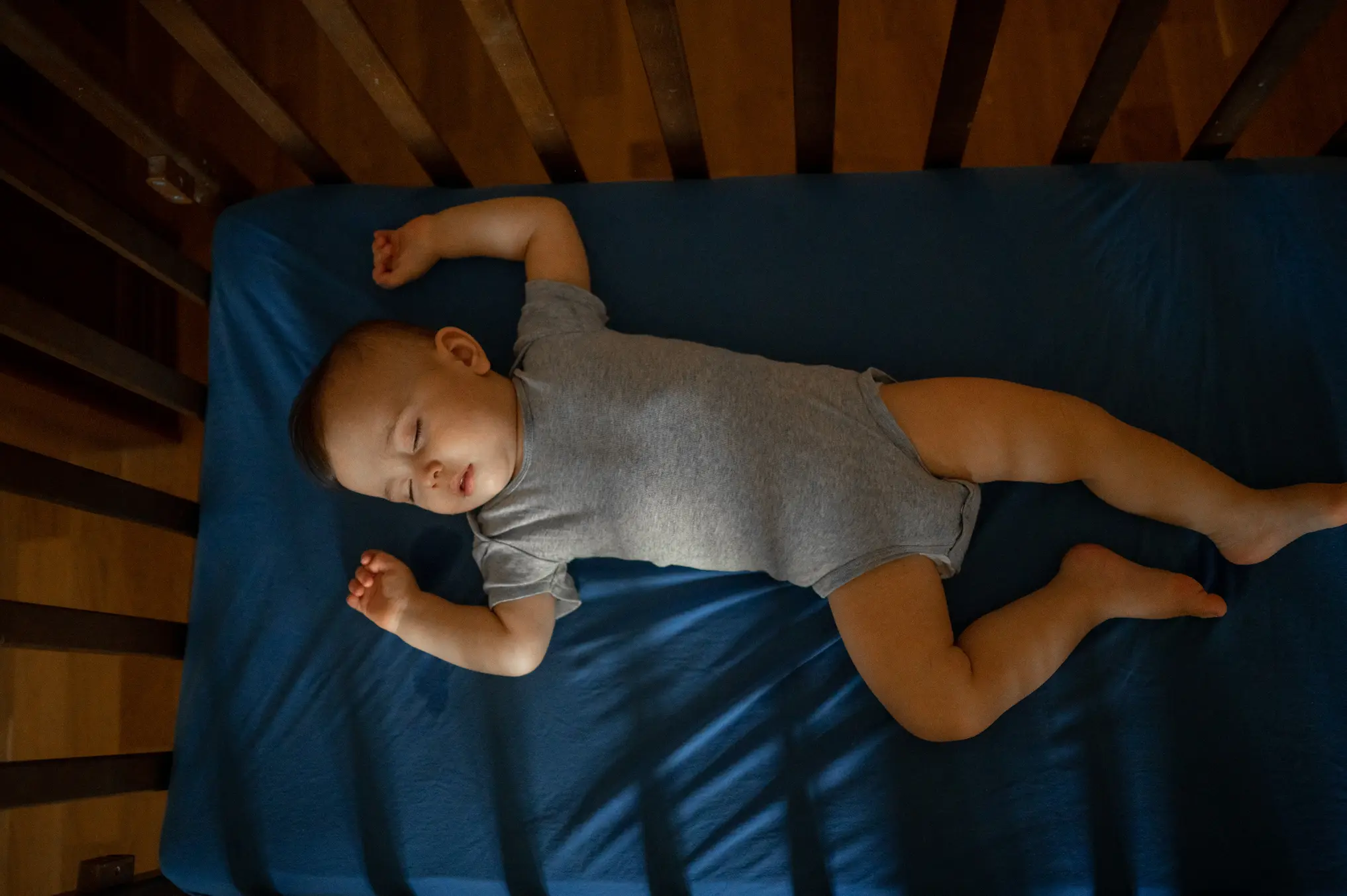
How to transition from co-sleeping to your baby’s own room?
You’ve been sharing your bedroom with your baby for several months and now you want them to move into their own room? Here are some tips to make the transition smoothly.
Establish a calming routine
The move from co-sleeping to your baby’s room is a stage that may require some adjustment for both you and your newborn. To help your baby get used to their new sleeping space, we recommend creating a calming and consistent routine so your baby can anticipate bedtime and the night’s events. Here are some ideas to include in your routine: bath, story, cuddle, soft song, placing them in the sleep sack. This helps your baby anticipate the moment they will fall asleep in their own bed. To make the transition easier, start with naps in their room, then gradually move to nights. Leave them an object that carries the scent of the parental bedroom, like their comforter, so they feel reassured. Also, spend time with your baby in their room (play, diaper changes, reading) so they associate the space with pleasant moments rather than separation.
How to respond to crying?
The change of environment may cause your newborn to cry or wake more often than they did when sleeping in the same room as you. This is a normal reaction: they are discovering a new space. To support your baby during this transition:
- Reassure them: enter the room calmly, speak softly, stroke their face, or hold them briefly if necessary, then place them back in their bed.
- Be consistent: when they cry at night, try to comfort them in their room rather than bringing them back to your bed, to avoid confusing their routine.
- Stay the course: consistency and patience are key. Some babies adjust in a few days, others need more time. Trust yourself and adapt the pace according to your child’s reactions.
Having a newborn sleep in your bed (bed-sharing) is therefore strongly discouraged due to the risks your baby would be exposed to. If you want your child to sleep in your room, we recommend opting for co-sleeping instead. If you have any questions on the subject, do not hesitate to consult your doctor, pediatrician, or one of our health professionals via the May app.  ** Photo credits: seventyfourimages | nastuffa | Pressmaster | Anna_Om | AnnaStills This text was translated from French by an artificial intelligence. The information, advice, and sources it contains comply with French standards and may therefore not apply to your situation. Make sure to complement this reading by visiting the May US/UK app and consulting the healthcare professionals who are supporting you.
** Photo credits: seventyfourimages | nastuffa | Pressmaster | Anna_Om | AnnaStills This text was translated from French by an artificial intelligence. The information, advice, and sources it contains comply with French standards and may therefore not apply to your situation. Make sure to complement this reading by visiting the May US/UK app and consulting the healthcare professionals who are supporting you.
